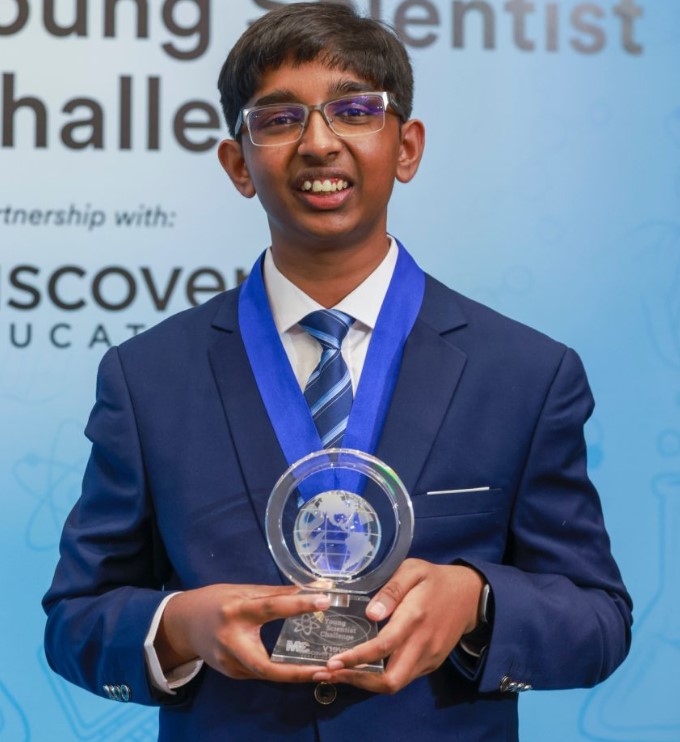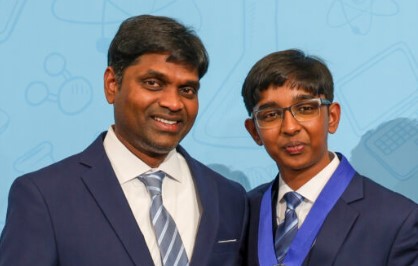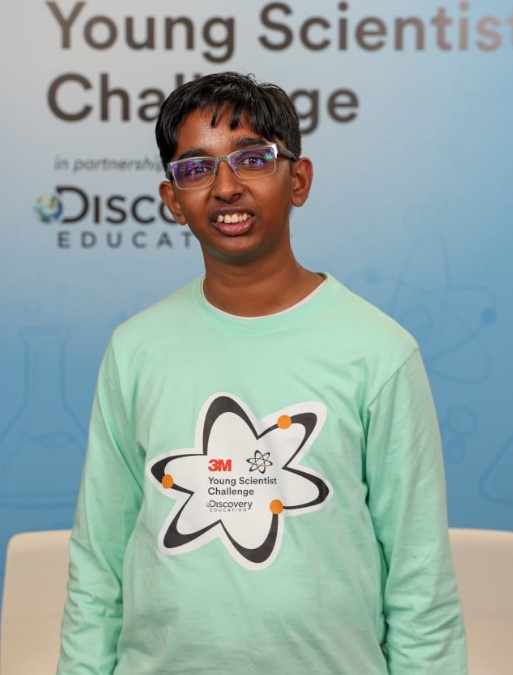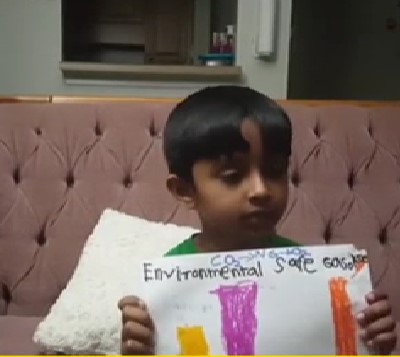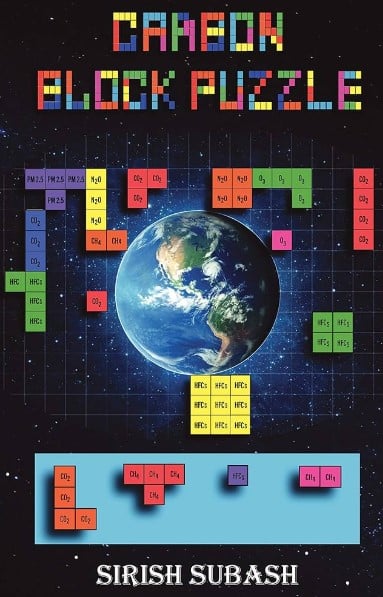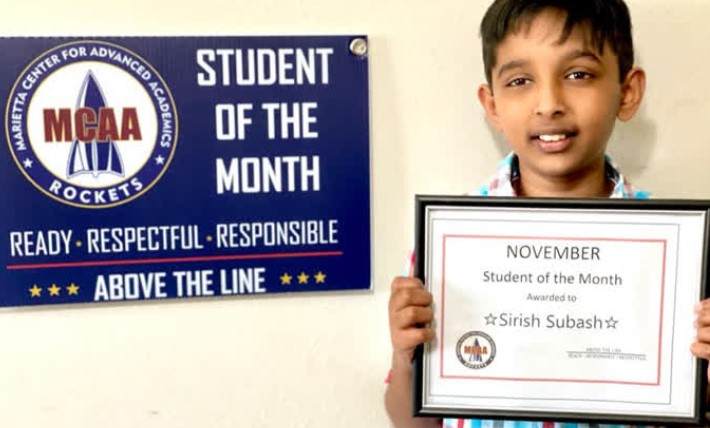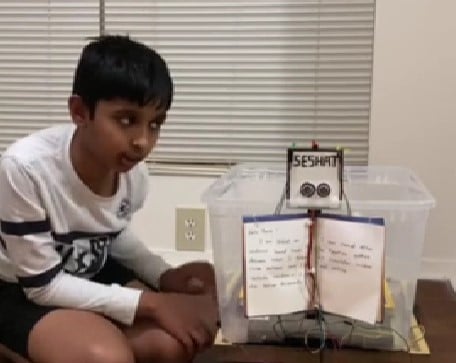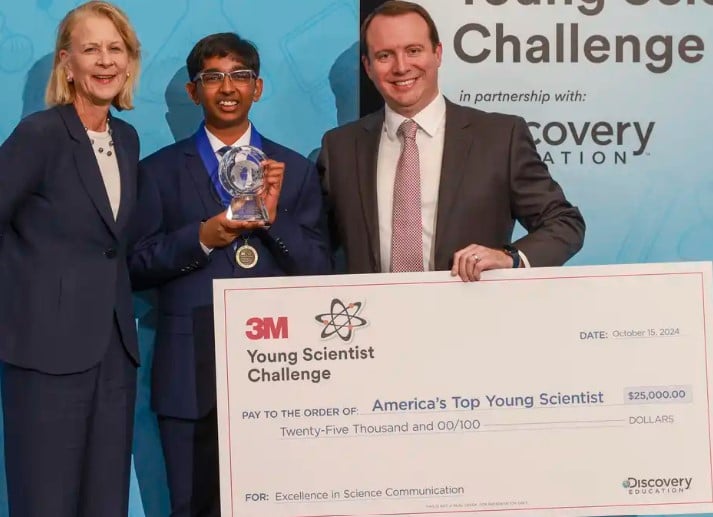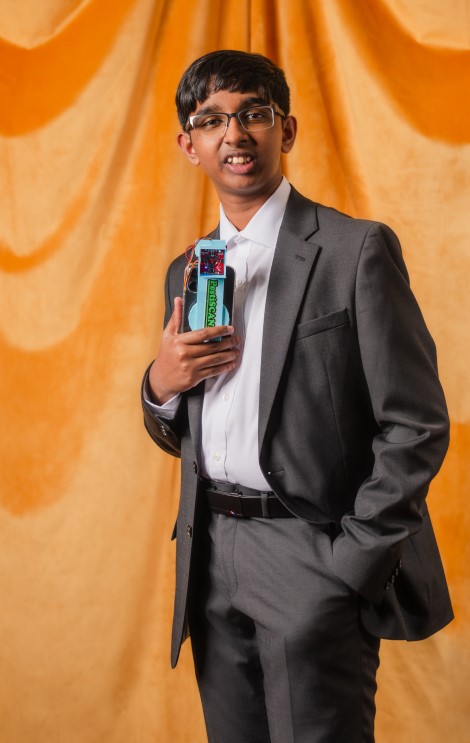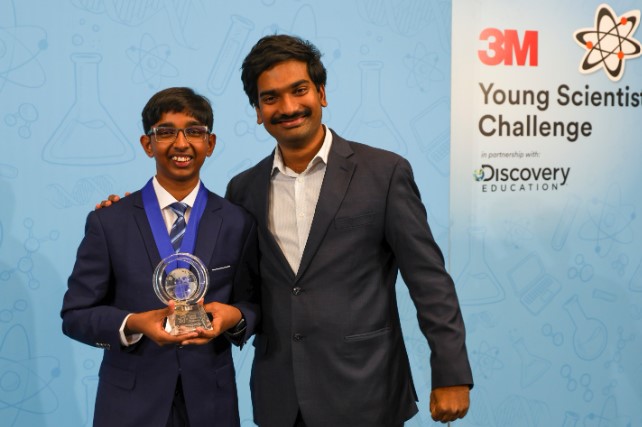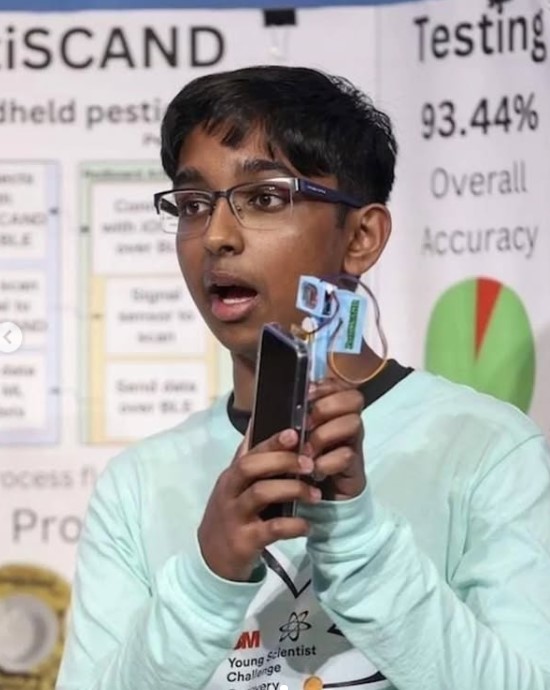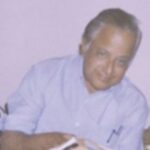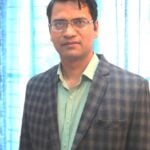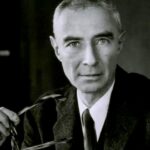Sirish Subash Age, Family, Biography
Quick Info→
Father: Subhash Arumugam
Mother: Devi Thulasiraman
Age: 15 Years
Some Lesser Known Facts About Sirish Subash
- When Sirish Subash was six years old, he asked his parents how the light switch worked. His parents supported him by answering his questions and giving him science books.
- He learned that opening or closing a circuit controls things like lights or fans.
- His curiosity grew, leading him to learn about electrons.
- This helped him to understand more about how the world works.
- Sirish Subash kept asking questions, and his parents encouraged him by answering them. Each answer made him even more excited about science and technology.
- As a child, he was inspired by people, books, and experiences that made him love science, technology, engineering, and mathematics (STEM).
- Sirish Subash watched many documentaries, such as The Boy Who Harnessed the Wind, which taught him about animals, the universe, and how science can change lives.
- He likes reading books such as Astrophysics for Young People in a Hurry, How I Killed Pluto and Why It Had It Coming, which deepened his interest in physics and astronomy.
- As a child, Sirish Subash once visited a science museum, where he saw hands-on experiments and spoke with speakers after their seminars.
- He also got the chance to talk to a scientist at the seminar.
- In 2021, while in sixth grade at the Marietta Center for Advanced Academics in Georgia, he published his first book on climate change, Carbon Block Puzzle.
- Later, the book was sold on Amazon.
- Sirish Subash was inspired to write the book after watching the documentary Before the Flood when he was five years old.
- His teacher, Ajala Herbal, noticed his talent and encouraged him to study science.
- In 2018, at his birthday party, Sirish Subash discussed climate change with his friends and explained its effects.
- He started writing a book on climate change when he was eight years old and finished it in two years.
- After that, Sirish Subash was recognized in the Asia Book of Records and the India Book of Records.
- His school was impressed by his high IQ and promoted him from fourth to sixth grade.
- In 2023, he published his second book titled Biochemistry the Fun Way, which simplifies complex science.
- Sirish Subash then started a YouTube channel to share his love for science.
- In 2024, he became well-known after he won America’s Top Young Scientist title and a $25,000 prize for creating an AI-based handheld device that detects pesticide residues on food.
- Sirish Subash competed for four months against nine other finalists.
- He won during the final challenge at 3M global headquarters in St. Paul, Minnesota, on 14 and 15 October 2024.
- During the competition, finalists faced interactive challenges and were judged on creativity, innovation, STEM knowledge, passion, research, presentation skills, and ability to inspire others.
- Sirish Subash’s project, PestiSCAND, works using spectrophotometry. The objects reflect and absorb different wavelengths of light based on their material.
- PestiSCAND sends out light waves from ultraviolet to infrared to take measurements. Some wavelengths reflect more than others, and a sensor records the light data.
- Products produced with and without pesticide residues reflect light differently. AI models learn from this data to recognize patterns.
- These patterns help determine if a new produce item has pesticide residues.
- 3M Young Scientist Challenge finalists are mentored by a 3M scientist during the summers.
- Sirish Subash was paired with Aditya Banerji, a Senior Research Engineer at 3M.
- Reportedly, his AI-based pesticide detector could improve public health and food safety. During a media interview, he said that his device is small, portable, and Bluetooth-enabled. He said,
Some pesticide residue is rigid enough to be washed away when we rinse vegetables and fruits from markets. The idea is not to replace washing, but rather to help ensure that those produces are clean enough for cooking or consumption.”
- Sirish Subash got the idea for PestiSCAND while washing grapes with his mother.
- When she told him to wash them well, he thought about why washing was important and how effective it was.
- He researched and found that about 70.6% of U.S. produce has pesticide residues.
- He discovered that long-term consumption of these residues can cause health problems like cancer, neurodegenerative diseases, and developmental issues.
- Sirish Subash realized that there was no easy way to check for pesticides at home.
- Pesticides can remain on produce even after multiple washes.
- He noted that the existing detection methods were too expensive or not consumer-friendly.
- This led him to develop PestiSCAND.
- Sirish Subash loves aviation, sci-fi, and playing the violin.

